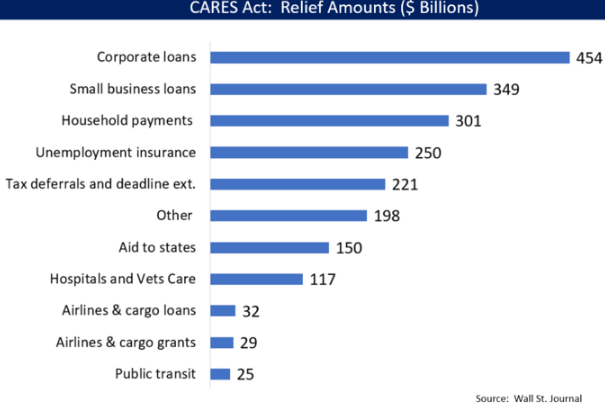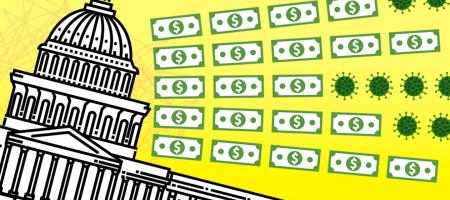Since lockdown measures were put in practice, there has been significant decrease in economic growth on a global scale. Imports and exports have ground to a halt, unemployment rates are at an all time high, and global markets are in a state of depreciation.
Governments around the world have undertaken major policy decisions to keep their national economies afloat. One of the most important among them happens to be stimulus packages. In broad terms, it is a package of economic measures put together by a government to stimulate a foundering economy.
Through this article, we will look at three different government responses to revive the economy following this colossal decline. We shall however, refrain from making or having any political proclivity whatsoever through this discussion. It shall be purely based on data and not any personal political opinion.
India
Not the first country to announce a stimulus package but certainly one of the most substantial one yet. Prime Minister Narendra Modi in his address to the nation earlier this month announced a ₹ 20 lakh crore (~$ 307 Billion) stimulus package amounting to about 10 per cent of the national GDP.
Finance Minister, Smt. Nirmala Sitharaman announced that the stimulus will be released in five parts beginning May 13th.
- Part 1: Total of ₹ 5.94 Lakh Crore to provide credit line for MSME, support to shadow banks, and electricity distribution companies. Apart from this, significant reduction in EPF rates and TDS rates have also been hailed.
- Part 2: In the second tranche, government aims to relieve the pressure on stranded migrant workers for two months and extending line of credit to agriculture industry amounting to a total of ₹ 3.10 Lakh Crore.
- Part 3. The massive breakdown of infrastructure among all industry and specially agriculture, pisciculture, etc has been profound. To address this, government has announced a total of ₹ 1.5 Lakh Crore toward initiatives such as herbal cultivation, beekeeping, etc.
- Part 4 & 5: The last two divisions are to deal with structural reforms in the form of viability gap funding and MGNREGA allocation totalling to ₹ 48,100 Lakh Crore.
Prime Minister Narendra Modi also made clear his intention to turn India into a self reliant economy. Pushing for quantum leaps and not incremental changes, Modi said that India must stand on the pillars of infrastructure, tech-driven innovation, vibrant demography, and demand.
This stimulus is a combination of cost-to-government and direct cash transfers. Data released indicate distribution of more than 6,000 kilos of foodgrains covering 12.39 beneficiaries for may alone. Apart from that, ₹ 34,800 crore in financial assistance using digital payment has been provided to about 39 crore beneficiaries.
Despite heavy criticism about this announcement being a part of Union budget, this package comes in a time of massive unemployment and India’s first full year contraction with over 12 Crore individuals losing their jobs.
As ambitious as this packages is, the effectiveness and impact remains to be seen.
United Kingdom
Chancellor of the Exchequer, Rishi Sunak announced the UK’s fiscal stimulus package to the tune of £ 350 Billion for business. The figure amounts to over 15% of UK’s GDP to introduce these plans –
- COVID Corporate Financing Facility (CCFF) : Small and Medium sized businesses accessing cheap loans of up to £ 5 Million.
- Coronavirus Business Interruptions Loan Scheme (CBILS) : For Larger businesses accessing loans of higher denominations.
- Coronavirus Job Retention Scheme : To provide grants of up to 80% for wages of laid off employees to a maximum of £ 2500 per month for a three month period.
- Self – Employed Income Support Scheme : A £ 60 Billion scheme to provide self-employed with up to 80% of their previous profits for a period of three months.
Most uniquely however, British response to the pandemic is the most unique one.
To hibernate the economy without causing unemployment and insolvency
– Christian Odendahl, Chief Economist at Centre for European Reforms
To put businesses on hold instead of driving them to the ground is perhaps the only way out of this fiscal slump. With countries such as USA experiencing upwards of 30% unemployment, UK’s unemployment is essentially unaffected hovering at 4%.
With more furloughs and economic reliefs announced, a steady economic revival is expected.
United States of America
USA effectively pioneered the Keynesian practice of handing out stimulus packages to rekindle failing economies.
Earlier this year the US Congress passed the Coronavirus Aid, Relief, and Economic Security Act (CARES Act) to ‘Provide emergency assistance and health care response to individuals, families and businesses affected by the COVID-19 pandemic.’
The act allows for a package of $ 2 Trillion through the following channels –

The act also addresses unemployment with Pandemic Unemployment Compensation and Pandemic Unemployment Assistance to allot employment benefits to eligible individuals.
Apart from that, the Paycheck Protection Program (PPP) have also allowed failing businesses to stay afloat by taking out loans of up to $ 10 Million in order to pay wages and prevent unemployment.
However, there has been significant delay with the application process and the huge volumes of the operation. With the White House issuing statements to expect unemployment rates to peak at 23%, the impact of the packages remain to be tested.
With newer stimulus packages from the Congres? s stipulated to ingress soon, cushioning of the effect is to be expected.
The Bottom Line
With increased government spending on the rise to cushion the fall caused by this pandemic, it is but of paramount importance to become self aware of our financial affairs and try to master financial minimalism. Not only for the duration of the lockdown, but for the times to come. To master financial discipline is to have control over one’s independence and in these uncertain and tumultuous times we have to take the step and step out of our comfort zone to get things done.
Let us know in the comments what you think about your government’s steps and how are you planning to wade through this disaster?

